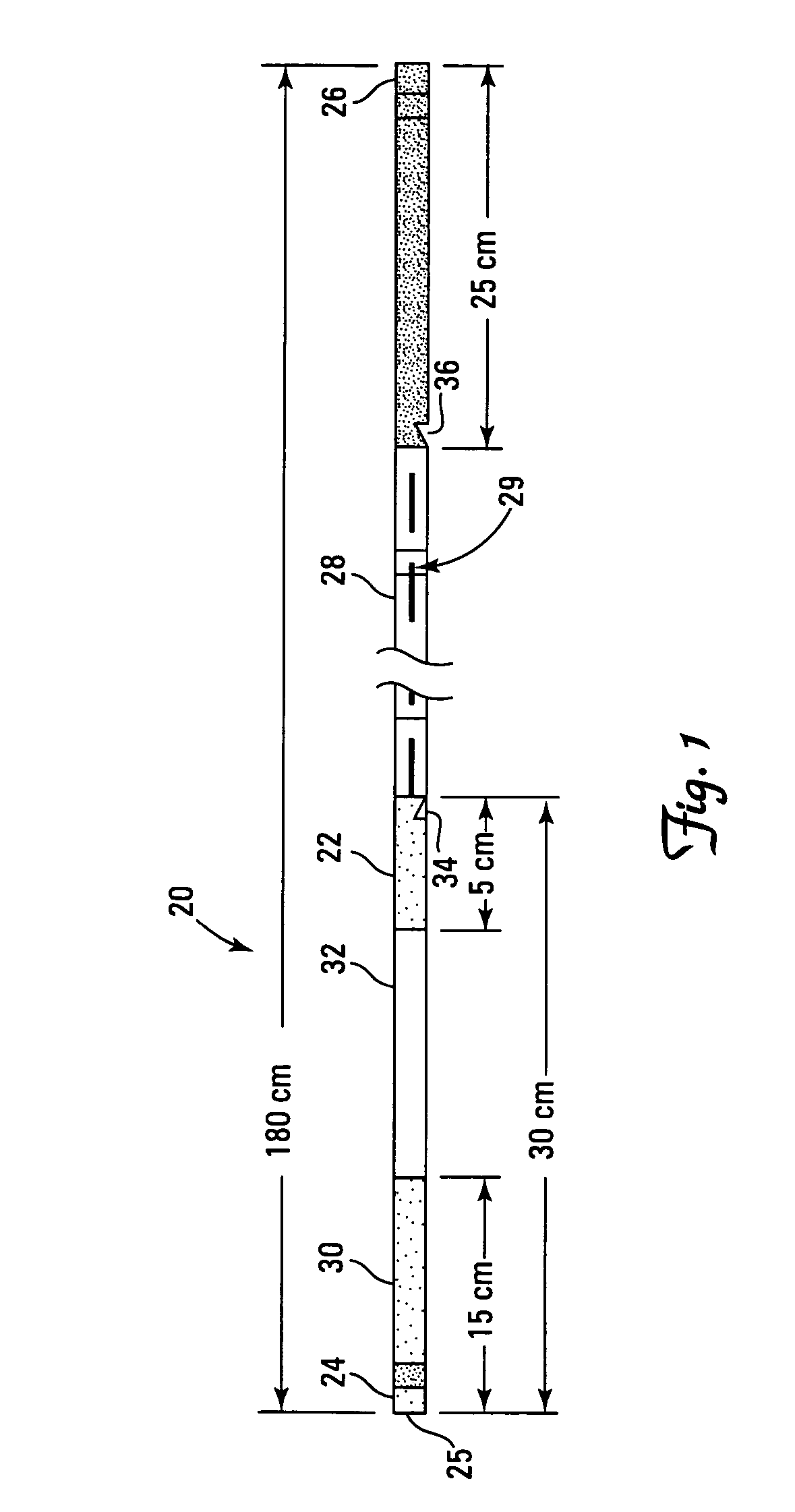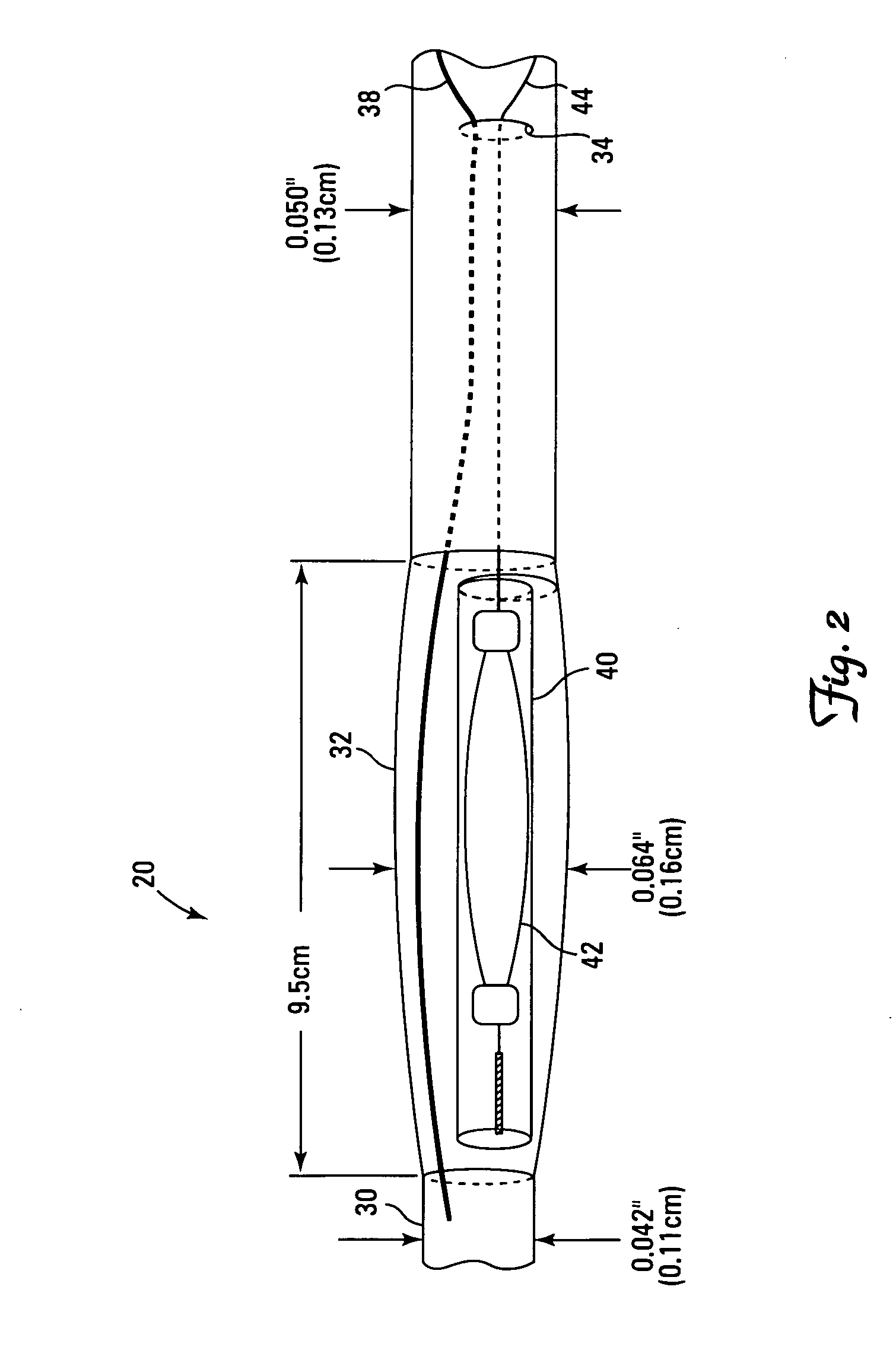Rapid exchange catheters and embolic protection devices
a technology of rapid exchange catheter and protection device, which is applied in the field of rapid exchange catheter and embolic protection device, can solve the problems of affecting the flow of blood in the carotid, renal, peripheral, and other blood vessels, affecting the flow of blood, and requiring treatmen
- Summary
- Abstract
- Description
- Claims
- Application Information
AI Technical Summary
Benefits of technology
Problems solved by technology
Method used
Image
Examples
Embodiment Construction
[0039] The terms “distal” and “proximal” as used herein refer to the relative position of the guidewire and catheters in a lumen. The most “proximal” point of the catheter is the end of the catheter extending outside the body closest to the physician. The most “distal” point of the catheter is the end of the catheter placed farthest into a body lumen from the entrance site. The same meaning is applied to these terms when used in describing an embolic protection device.
[0040] The use of the phrases “distal embolic protection device” or “embolic protection device” herein refers to embolic protection devices that are occlusive, diverting, and / or filtering. The term “embolic protection device” is meant to include devices used to protect a target site and located either proximal to, at, or distal to the treatment site.
[0041] The invention provides a catheter comprising: an elongated member configured to be advanced along a vascular path of a patient, the elongated member having a proxi...
PUM
 Login to View More
Login to View More Abstract
Description
Claims
Application Information
 Login to View More
Login to View More - R&D
- Intellectual Property
- Life Sciences
- Materials
- Tech Scout
- Unparalleled Data Quality
- Higher Quality Content
- 60% Fewer Hallucinations
Browse by: Latest US Patents, China's latest patents, Technical Efficacy Thesaurus, Application Domain, Technology Topic, Popular Technical Reports.
© 2025 PatSnap. All rights reserved.Legal|Privacy policy|Modern Slavery Act Transparency Statement|Sitemap|About US| Contact US: help@patsnap.com



